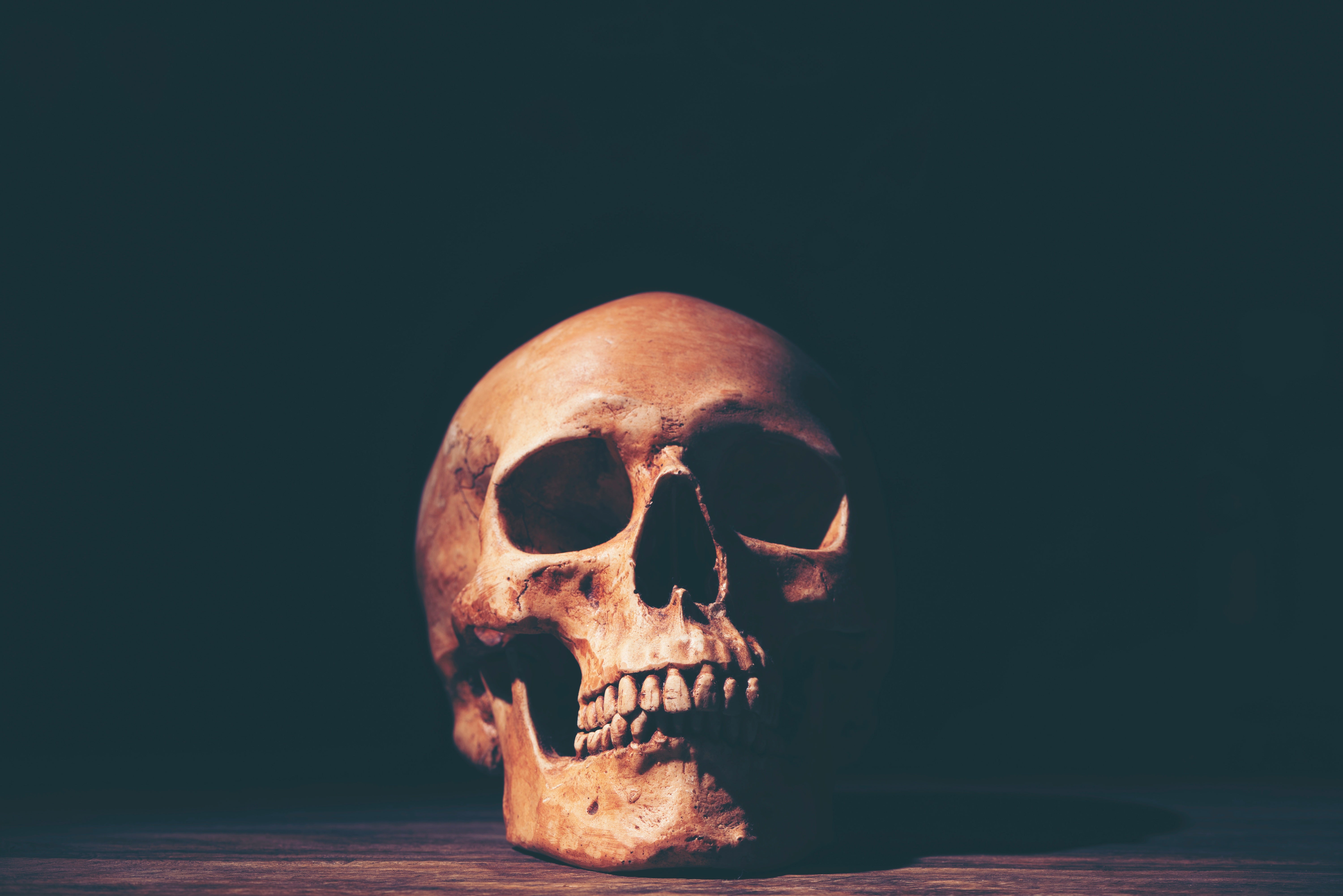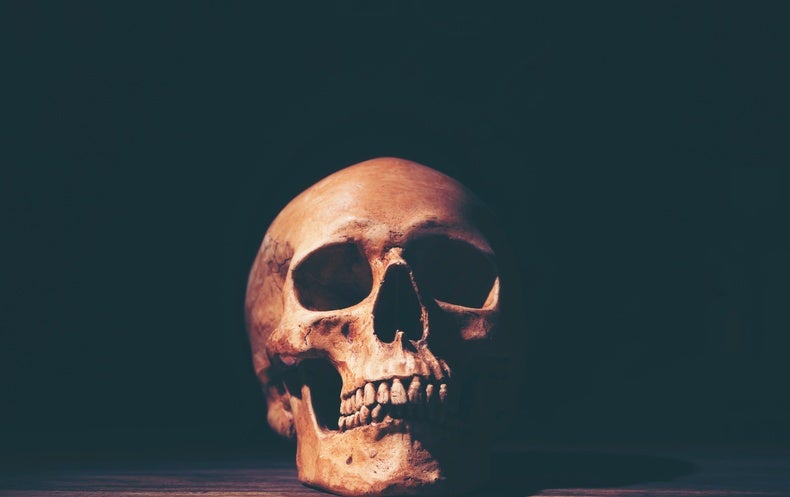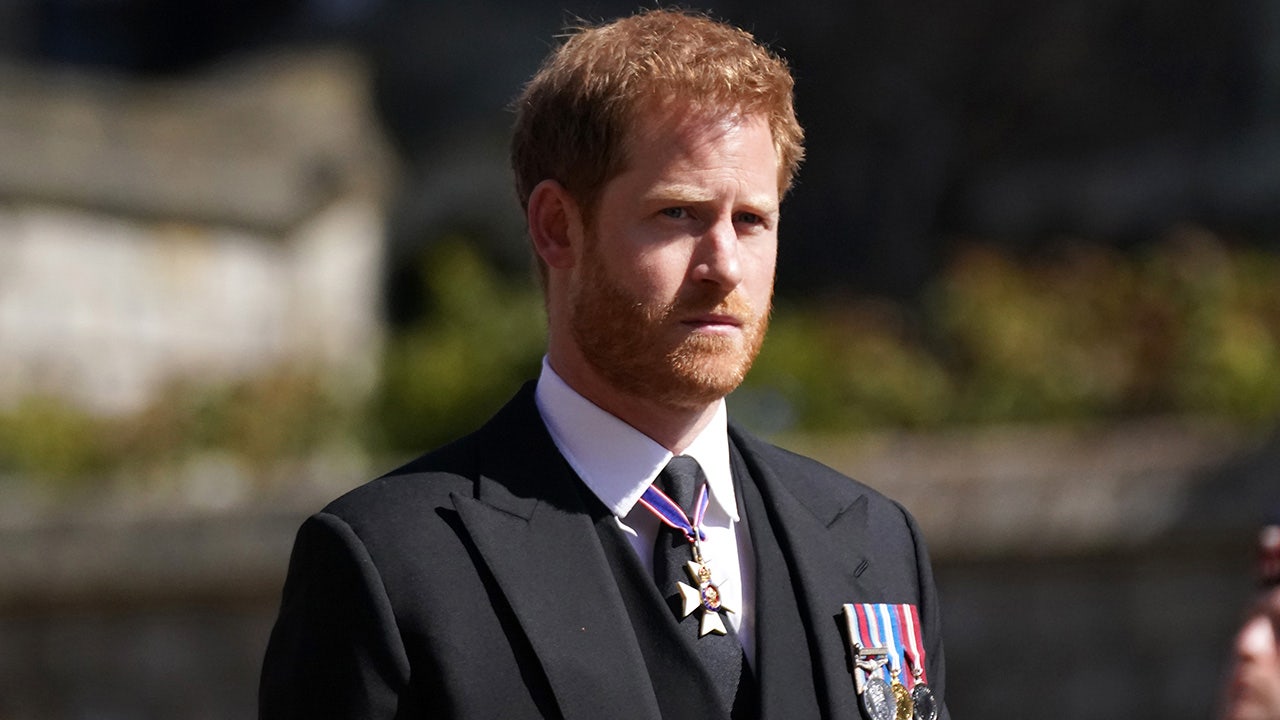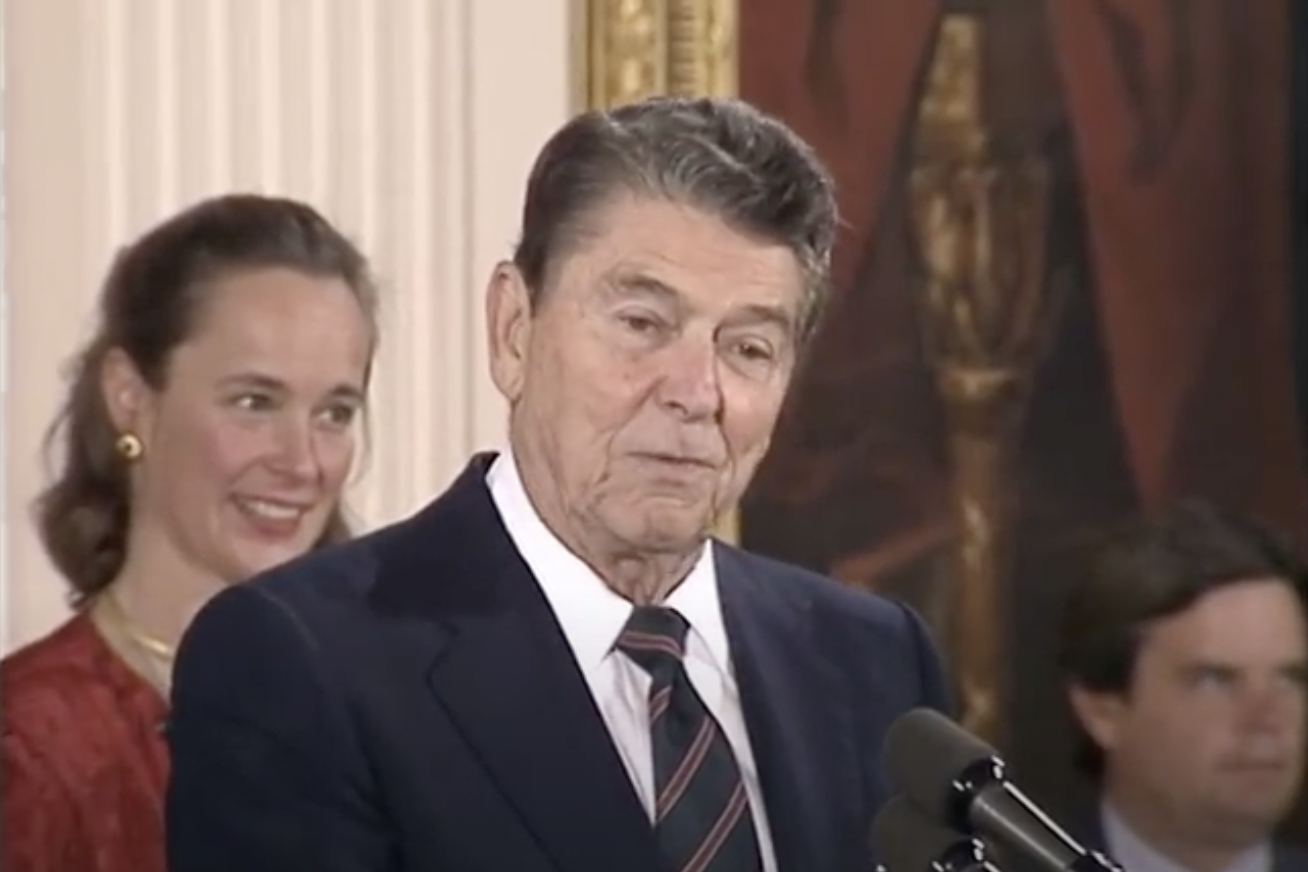
Human skulls are pierced with coffin nails and human bones are turned into Ouija board pieces; almost nothing is off-limits in the U.K.’s thriving online human remains trade, a Live Science investigation has found.
Buying and selling human remains isn’t illegal in the U.K., provided that the body parts sold aren’t used for transplants, and Facebook and Instagram are hubs for dealing in the dead. The remains of adults, children, babies and fetuses are all on the market.
Live Science documented 50 sellers across England and Wales that used Facebook and Instagram to offer human remains for sale between 2020 and 2022. While some sellers were offering a skull or bone only in private Facebook groups, many of the sellers offered multiple human remains through public Facebook and Instagram pages associated with antiques, oddities and taxidermy businesses, including physical shops.
Sellers and collectors typically posted pictures of unaltered human remains, unless the bones had been cleaned and prepared for learning or study in the past. However, Live Science also found remains that had been disfigured.
One Instagram seller posted a picture of a human skull with the words “kill me” carved into the side of it. The skull also had coffin nails in it and had been turned into a lamp. The user, named Joseph Plaskitt according to his Instagram profile, posted a picture of the altered skull on Oct. 17, 2021. He told Live Science the skull was a “teaching piece” from Europe and had been carved by “a fellow collector.”
Live Science found more human skull lamps shared by other sellers. There were also steampunk-inspired skulls filled with cogs, gears and other mechanical parts, as well as skulls that had been made to look like vampires.
The human remains trade appears to be thriving on Facebook and Instagram even though Meta, the parent company of Facebook and Instagram, prohibits the sale of body parts and bodily fluids on its platforms under its terms and policies. A Meta spokesperson told Live Science: “We’ve removed the violating content brought to our attention and will continue to remove content in line with our policies.”
This isn’t the first story to highlight the role of social media in the human remains trade. For example, Wired reported in 2019 that Instagram had a booming human skull trade, and a 2020 Live Science investigation found U.S. sellers offering up looted skulls and other human remains in private Facebook groups. A Facebook spokesperson told Live Science in 2020 that once they become aware that a group has violated their policies they take action against them.
Most of the human skulls and bones that Live Science documented in this investigation appeared to be medical or anatomical specimens that could be decades or centuries old. A 2019 editorial published in the BMJ estimated that there are likely thousands of human skeletons from medical education sources in private possession in the U.K., with medical students encouraged to buy bones for their studies in the 20th century. However, human remains are usually sold with little to no backstory and can circulate in the trade for many decades, changing hands multiple times, so it’s difficult to know exactly where they come from.
The human remains trade also has links to grave robbing, both historical and modern—and disturbing a place where remains have been formally laid to rest is illegal without a license. Ultimately, whoever the deceased were, researchers say those people didn’t give consent for their remains to be used in this way.
“Nobody consents to having their body bought and sold,” Shawn Graham, a digital archeologist at Carleton University in Canada, told Live Science.
Graham researches human remains trafficking online, using images posted by sellers to track the global trade. He knows human remains posted online are real, partly because collectors don’t want replicas so it’s in their interest to offer real human remains, but also because replicas are easy to spot. Live Science didn’t verify the authenticity of any remains in person, but showed images of the remains in this story to researchers as part of the investigation; the experts thought that all of these specimens were real.
One popular seller offered black-stained human skulls with iron nails for teeth, human bone wind chimes and Ouija board planchettes (the triangular gameboard pieces), and wallets crafted from human and pig skin. The seller, named Henry Scragg online, promotes his merchandise on Facebook and Instagram with an online store and a physical shop/museum called “Curiosities from the 5th Corner” in Essex, England.
Scragg didn’t respond to Live Science’s questions, but on an Instagram post promoting the human skin wallets on Sept. 13, he wrote, “To some these are awesome, to others, they ask why. But why not? Why should we not use what’s available to us when no one else is using it, why should we let worms, bugs and micro organisms feast on this perfectly good flesh when it can be used to create appreciated objects.”
Two forensic scientists told Live Science that some of the human skulls Live Science uncovered during its investigation appear to have come from people who suffered violent deaths. Two skulls offered for sale by Scragg appeared from photos to have gunshot wounds.
Scragg said in a March 29 social media post that one of the skulls was most likely from a suicide victim, and the other, in an earlier post on July 2, 2020, was an executed prisoner from China. Two forensic scientists noted the visible gunshot wounds in the photos but couldn’t say whether the claims about the deaths were true. The alleged prisoner’s skull did, however, have at least two gunshot wounds with an entry to the back of the head, which is a common location in executions, according to Nicholas Marquez-Grant, a senior lecturer in forensic anthropology at Cranfield University in England.
A third skull—shared in a July 11, 2020, post—had injuries that were compatible with blunt force to the head around the time of death. Marquez-Grant noted that blunt-force injury can result from being hit by a blunt weapon, such as a baseball bat, or from slamming against a wide and large surface—for example, by falling from a height and hitting the ground, or when experiencing a vehicle accident. The blunt force, in this case, appears to have been against a large surface. “Could be [an] accidental death, but certainly violent in nature,” Marquez-Grant told Live Science in an email.
All three skulls appeared to have been professionally cleaned and prepared for teaching or study, with medical cuts, and are therefore most likely retired medical or anatomical specimens, according to the forensic scientists.
Is it legal?
The buying and selling of human remains is largely ignored by existing U.K. legislation. Anyone can possess, buy and sell human body parts, provided they didn’t acquire the remains illegally and they’re not using them for transplants. But the remains themselves aren’t technically property, so they can’t legally be “owned.”
For example, if a museum holds human remains and a descendant of that deceased person decides to walk into the museum and take them, that might not be considered theft, according to a 2003 report by the Working Group on Human Remains for the U.K. government’s Department for Culture, Media and Sport (now the Department for Digital, Culture, Media and Sport). However, there are scenarios in which human remains can become legal property.
“If you take human remains and you apply work or skill, or some sort of technical process, to them to create something novel or different, you create an item of property,” Heather Conway, a professor of property law and death studies at Queen’s University Belfast in Northern Ireland, told Live Science.
Conway pointed to legal precedent for this. In 1998, the Court of Appeal for England and Wales upheld a conviction against an artist who stole anatomical specimens from the Royal College of Surgeons in London on the grounds that the college’s application of skill to create the specimens made them property and that taking them was therefore theft, according to a 1998 commentary in the Medical Law Review journal.
Conway noted that destroying human remains that have acquired property status could also be criminal damage, another offense that wouldn’t apply to unaltered human remains.
The Human Tissue Authority (HTA), part of the U.K. government’s Department of Health and Social Care, states that all human remains “should be treated with respect and dignity,” but the desecration or mutilation of a corpse isn’t against the law in England, Wales and Northern Ireland; Scotland is the exception.
To put that into context, the desecration of a statue or memorial can land a person in prison for up to 10 years under the Police, Crime, Sentencing and Courts Act 2022, according to the Home Office, another U.K. government department.
“I find it really bizarre that we have offenses relating to desecrations of monuments, but not people,” Imogen Jones, an associate professor of law at the University of Leeds in England, told Live Science.
There is nothing to stop people from desecrating human remains in private, although sexual penetration of a corpse is illegal under the Sexual Offences Act 2003. Jones noted that tampering with human remains in public can be an offense under outraging public decency.
In 1989, a jury ruled that earrings made from freeze-dried human fetuses displayed in a London art gallery were an outrage to public decency, the Associated Press reported at the time. The artist was fined £500 ($875), and the gallery curator was fined £350 ($610)—around £1,180 and £826 ($1,338 and $937) in today’s money.
Live Science found several of what sellers claim are preserved human fetuses for sale online and saw them in pictures of private collections, along with the skeletons of babies and the skeletons of children. These human remains weren’t modified like some adult skulls and bones were, but the 1989 case highlights a legal precedent for modified human remains outraging public decency.
Some laws may also affect the sharing of images of desecrated remains in the digital space. For example, Jones pointed to the Obscene Publications Act 1959, for which the U.K. Crown Prosecution Service notes prosecutors may consider outraging public decency first. The U.K. also has the Communications Act 2003, which covers messages and other matters that are grossly offensive or of an indecent, obscene or menacing character through a public electronic communications network. However, the interpretation of what constitutes obscenity under these laws is subjective, and no law expressly forbids the desecration of a corpse.
Where do the human remains come from?
Most of the human remains that Live Science saw appeared to have been processed for learning or study. Live Science found pictures of bones next to boxes with the names of medical supply companies on them, including Adam, Rouilly & Co. The company, now called Adam, Rouilly, deals in synthetic models today but is open about supplying real skeletons to medical students in the 20th century on its website. Adam, Rouilly didn’t respond to a request for comment.
Human remains held by private collectors today may have helped medical students become doctors, or been studied to help understand or treat diseases, before they entered the collectors’ trade. Some sellers claim that this history makes them “ethically sourced,” but experts disagree.
“They weren’t ethically sourced in the first place,” Trish Biers, an osteologist and paleopathologist at the University of Cambridge in England, told Live Science. Biers coordinates a task force at the British Association for Biological Anthropology and Osteoarchaeology (BABAO) that investigates the sale and trade of human remains and the objectification and commodification of the dead and does public outreach.
In the late 1700s, London gangs dug up newly buried bodies and sold them to teachers to supply a growing demand for teaching specimens. The teachers and students also sometimes stole bodies themselves, according to the UK Parliament website.
The trade came under scrutiny in the late 1820s when the public learned that two men called William Burke and William Hare—often called Burke and Hare—were killing people to supply bodies to the University of Edinburgh’s anatomy department in Scotland. After Burke was caught and executed, his skin was turned into a notebook at the same university he’d been supplying, according to the University of Edinburgh .
The Anatomy Act 1832 sought to quell grave robbing and the outcry by establishing a new legal source of bodies; the unclaimed from workhouses, hospitals and prisons, as well as by making body donation legal. But the demand for bodies continued to increase through the 19th and 20th centuries, so the problem of finding bones was outsourced and the U.K. began getting its medical bones from abroad, especially India.
In 1984, at the peak of the medical supply trade in human remains, India exported about 60,000 skeletons and skulls to Britain and other European countries, America, and Australia for medical students, the Chicago Tribune reported in 1985.
A lot of the bodies now traded originally came from deeply impoverished communities. “This was their only way of getting someone to take away their dead because they simply couldn’t afford the funeral plot; they couldn’t afford the cremation ceremony,” Biers said. “It’s really sad.”
The trade in India had strong links to grave robbing, just like in the U.K. prior to the Anatomy Act 1832. “Most of the time the graves were robbed for the skeletons,” Veena Mushrif, a bioarchaeologist at the Deccan College Post-Graduate and Research Institute in Pune, India, told Live Science in an email. “It was unethical.”
It was easy for Europeans to access India’s skeletons because India was a British colony, Mushrif said. India was under British rule for around 200 years until it gained independence in 1947. However, India continued to be the U.K.’s main source of human remains after it became independent.
The Indian government banned skeleton exports in 1985 after a bone trader was arrested for exporting 1,500 skeletons belonging to children. This sparked fears that children were kidnapped and killed for their bones, investigative reporter Scott Carney reported for WIRED in 2007.
Carney, who also wrote a book about the global market in body parts called “The Red Market ” (William Morrow, 2011), told Live Science that the trade out of India continues today, but it’s greatly diminished compared with before the ban in 1985. China was another mass exporter of human skeletons in the 20th century and didn’t bring in a ban until 2008, according to the BABAO website.
The unethical means by which human remains were acquired also extends to universities and museums. “A lot of collections were populated with colonized bodies, but also the poor who had no choice, the disfigured, the disenfranchised, the ethnically different,” Biers said. “They were all put into collections and not in an ethical way.”
The Human Tissue Act 2004, which created the HTA, established clearly that body and organ donation required personal informed consent. The HTA regulates organizations using human remains for medical treatment, post-mortem examination, education and training, and display in public to ensure that they are treated with dignity and respect. Furthermore, if the remains are less than 100 years old, a license is required that must include proof of consent from the deceased—but this doesn’t apply to the remains of people who died before 2006 if more than 100 years has passed since their death, according to the HTA Codes of Practice.
In private ownership, there are no such regulations. Furthermore, the HTA doesn’t inspect shops selling human remains; a statement from the HTA is provided at the bottom of this story.
Two sellers told Live Science that they wouldn’t disrespect human remains in their possession and claim that many private collectors likely treat ex-medical remains with more respect than they would have received in places of learning or study.
“I try my best to treat them with as much respect as you possibly can,” said Chris Bull, an online seller based in Bristol. In his opinion, that means “just not doing anything stupid with them.”
Another online seller, Reading-based Mattaeus Ball, told Live Science that he too has respect for human remains and won’t do anything “grotesque” with them, arguing that private collectors are taking care of the remains that the medical industry used and threw away.
“These were people that were exploited for the medical industry and once we were finished with them, drawing all over them, writing on the bones, cutting them up, treating them like an object, they’ve just been discarded,” Ball said.
The demand for skeletons in academia still exists. BABAO tries to transfer specimens to collections that need them most. Biers also takes in unwanted privately held human skulls and bones from the public so that they can be used for educational purposes.
In fact, so many institutions need skeletons for teaching across different disciplines that with no mass imports from abroad, there’s a shortage, even with people willingly donating their bodies to medical science.
“Some people buy human remains so they can use them to teach because they don’t have a lab budget,” Biers said. In other words, human skulls and bones originally acquired for learning and study can go into the oddities market and then come back out again for teaching. Biers said that if this happens, human remains won’t return to private collectors or be disposed of in an unprofessional way.
Repatriating human remains that were acquired for the medical industry is difficult and expensive; it requires DNA testing and other research to discover the person’s ancestry and where they came from. While it’s possible, the scale of trade means that most of these skulls and bones won’t ever be formally laid to rest in their homelands.
“There’s a movement now to actually start figuring out if there’s a way to reclaim some of these bodies, but it was so prolific,” Biers said. “You’re talking thousands and thousands and thousands of bodies over many, many, many decades.”
Human Tissue Authority statement
The HTA provided Live Science with the following statement:
“The Human Tissue Authority’s remit is set by the Human Tissue Act. This requires certain activities using human tissue to be licensed and subject to the HTA’s regulatory oversight. The HTA regulates organisations that remove, store and use human tissue for research, patient treatment, post-mortem examination, anatomical examination, surgical training and display in public. These activities require appropriate consent to be in place for them to lawfully take place. The HTA’s overarching Code of Practice A sets out the four Guiding Principles for the use of human tissue for purposes within the HTA’s remit. The actions of anyone undertaking activities falling within the remit of the HTA should be guided by these four principles of consent, dignity, quality, and honesty and openness.
Public display of human tissue can be subject to regulation by the Human Tissue Authority in some circumstances, depending on the age of the material and the period for which it has been held.”
Copyright 2022 LiveScience, a Future company. All rights reserved. This material may not be published, broadcast, rewritten or redistributed.
























































